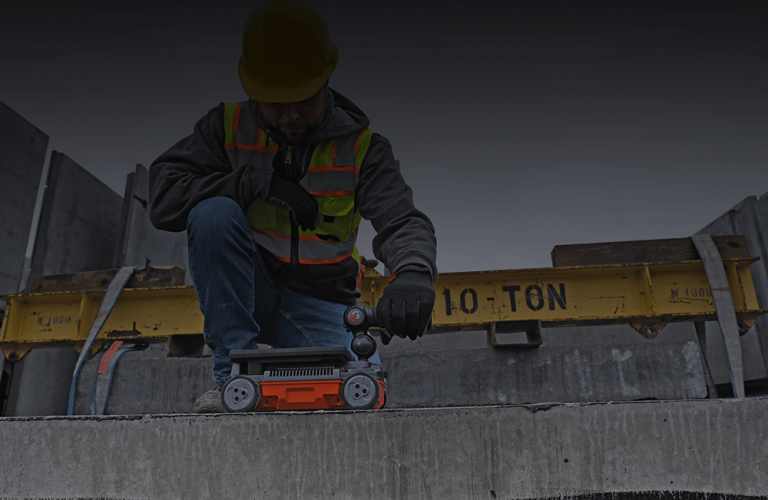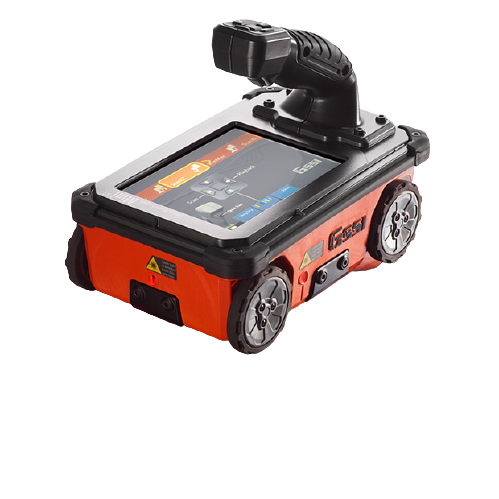RainierGPR Concrete Scanning: Advanced Solutions for Safe Building And Construction
RainierGPR Concrete Scanning: Advanced Solutions for Safe Building And Construction
Blog Article
Discovering the Key Advantages of Concrete Scanning in Construction Projects
In the realm of contemporary building practices, the application of concrete scanning innovation has become an essential tool for making certain job efficiency and architectural stability. From boosting security measures to properly finding utilities concealed below the surface area, the advantages of concrete scanning are complex. The capability to streamline task timelines and decrease prices while preserving existing frameworks is a testament to the worth this technology offers the building sector. As we explore the nuanced benefits of concrete scanning, it comes to be obvious that its impact expands far past surface-level evaluations, supplying a peek right into the complex web of benefits waiting to be discovered.
Enhanced Security Procedures
Making use of innovative concrete scanning modern technology boosts safety procedures on building sites by offering precise detection of potential risks hidden beneath the surface. This modern technology makes it possible for building and construction groups to recognize rebar, avenues, post-tension cords, and various other obstructions before excavation or drilling, considerably minimizing the danger of accidents. By identifying these aspects exactly, workers can avoid harmful crucial architectural parts, hence stopping injuries, delays, and costly repairs.
Moreover, concrete scanning plays an essential function in guaranteeing the integrity of existing frameworks throughout growths or remodellings. By detecting weak points, voids, or deterioration within concrete aspects, engineers can resolve these problems proactively, enhancing the general safety and long life of the building. This aggressive method not just reduces the risk of architectural failures yet also lessens the potential for crashes triggered by unpredicted structural shortages.
Fundamentally, the implementation of concrete scanning modern technology serves as a proactive safety action that safeguards both building workers and the architectural integrity of structures, ultimately adding to the total success and efficiency of building and construction projects. - RainierGPR Concrete Scanning
Accurate Detection of Utilities
Concrete scanning technology helps with exact identification of underground utilities, boosting construction site safety and effectiveness. Exact discovery of utilities is vital in building and construction projects to avoid expensive problems, job hold-ups, and most notably, ensure the security of workers and the public. By using innovative scanning modern technologies such as ground-penetrating radar (GPR) and electro-magnetic induction, construction teams can map out the place of buried pipes, cords, and various other energies with high degrees of precision.

Time and Expense Efficiency

Concrete scanning modern technology enables building groups to accurately find rebar, post-tension wires, and other embedded items within concrete frameworks. This precise info assists in staying clear of costly errors such as accidental damages to crucial aspects throughout drilling, cutting, or coring tasks. Additionally, by determining prospective threats in advance, the demand for pricey fixings or rework due to damages can be reduced, resulting in cost financial savings for the job.
In addition, the capacity to promptly and properly detect utilities beneath the surface area without causing any type of damages not just conserves time however likewise avoids expensive interruptions to existing infrastructure. In general, the time and price performance advantages of concrete scanning make it an indispensable tool for enhancing construction task monitoring and implementation.
Preservation of Structural Stability
Protecting the architectural integrity of buildings and infrastructure is extremely important in guaranteeing long-lasting security and safety. Concrete scanning plays a critical function in this conservation procedure by permitting building and construction experts to recognize prospective threats to the structural honesty of a building or infrastructure prior to they escalate right into major concerns. With using advanced scanning innovations such as ground-penetrating radar (GPR) and electro-magnetic induction, building and construction teams can non-invasively analyze the problem of concrete frameworks, locate rebar, post-tension wires, and various other embedded aspects, and identify any type of voids, splits, or wear and tear use this link within the concrete.
Improved Task Planning
In order to guarantee the effective execution of building projects, careful attention to detail and extensive preparation are necessary components that come from a comprehensive understanding of the structural problems identified with concrete scanning. Boosted job preparation, facilitated by concrete scanning, enables construction teams to preemptively attend to potential difficulties, allot resources a lot more efficiently, and establish sensible timelines. By accurately determining the area of rebar, post-tension cable televisions, and various other embedded items within concrete frameworks, job supervisors can develop a lot more precise building strategies that lessen the threat of costly mistakes or hold-ups. Additionally, the data gotten from concrete scanning makes it possible for stakeholders to make informed decisions regarding structural adjustments, improvements, or developments, leading to smoother job shifts and improved general job end results. Inevitably, including concrete scanning into the project planning phase enhances sychronisation among staff member, promotes aggressive problem-solving, and contributes to the successful delivery of building jobs within budget plan and routine restraints.
Verdict
To conclude, concrete scanning offers countless benefits in building jobs. By boosting safety actions, accurately identifying energies, improving time and expense effectiveness, preserving structural honesty, and helping in project planning, concrete scanning proves to be an essential device for successful job implementation. Its capability anchor to mitigate dangers, raise effectiveness, and make certain job honesty makes it a crucial possession for construction experts.
In the world of modern building techniques, the usage of concrete scanning modern technology has arised as a critical device for ensuring job performance and structural honesty.Concrete scanning technology allows building and construction teams to precisely situate rebar, post-tension cables, and other ingrained things within concrete structures. Via the use of sophisticated scanning modern technologies such as ground-penetrating radar (GPR) and electromagnetic induction, building groups can non-invasively assess the condition of concrete frameworks, locate rebar, post-tension cords, and other ingrained aspects, and determine any spaces, splits, or damage within the concrete.
In order to make sure the successful execution of construction jobs, precise interest to information and thorough planning are important elements that stem from a detailed understanding of the architectural problems determined with concrete scanning. Eventually, integrating concrete scanning right into the job planning phase enhances sychronisation among team members, fosters proactive problem-solving, and adds to the effective shipment of building jobs within budget and schedule constraints.
Report this page